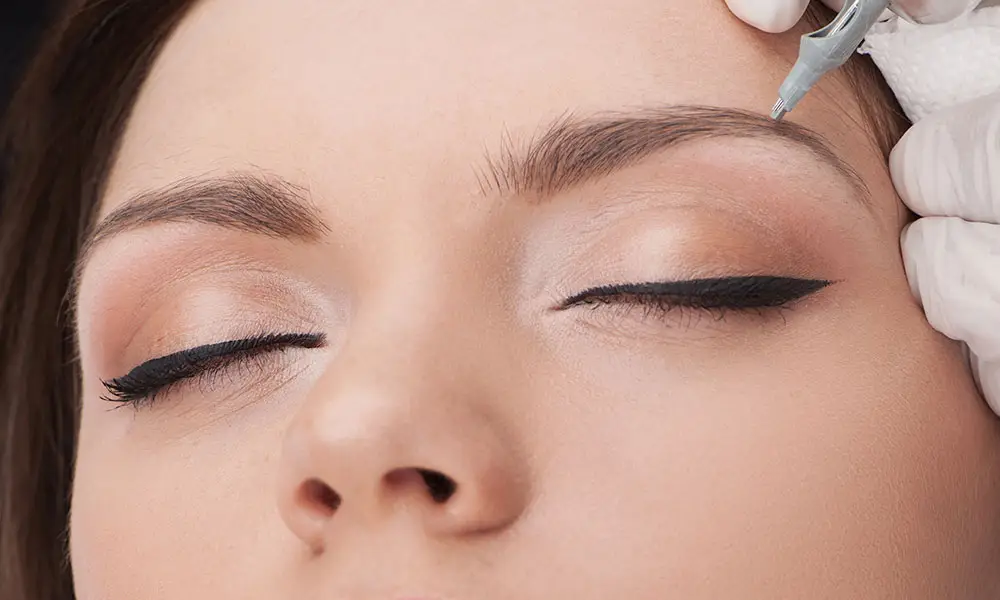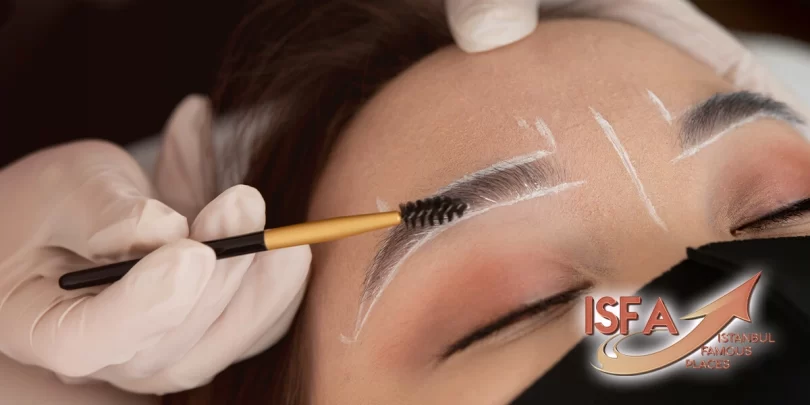What is Microblading Istanbul?
Microblading Istanbul is a semi-permanent cosmetic tattooing technique used to enhance the appearance of eyebrows. Also known as eyebrow embroidery or microstroking, microblading Istanbul involves the use of a manual hand tool with ultra-fine needles to deposit pigment into the superficial layers of the skin, creating natural-looking hair-like strokes that mimic the appearance of real eyebrow hairs. Unlike traditional eyebrow tattooing, which uses a machine and creates a more solid, filled-in look, microblading Istanbul results in softer, more defined brows that can last anywhere from one to three years, depending on factors such as skin type, lifestyle, and aftercare.

Microblading Istanbul is an excellent option for individuals who want to improve the shape, fullness, and symmetry of their eyebrows, particularly those with sparse or thinning brows due to over-plucking, genetics, or medical conditions like alopecia. The procedure typically requires an initial consultation to discuss the client’s desired brow shape and color, followed by one or more treatment sessions to achieve the desired results.
Can I Get Microblading in Istanbul?
Yes, services are widely available in Istanbul, particularly in major cities like Istanbul, Ankara, and Izmir, where there are many experienced and skilled technicians offering this popular cosmetic procedure. Istanbul is known for its advanced medical and aesthetic industry, and microblading is one of the many cosmetic treatments available to both locals and tourists visiting the country.
If you’re interested in getting microblading done in Istanbul, it’s essential to research and choose a reputable and qualified technician or clinic with a track record of successful outcomes and satisfied clients. You can look for reviews, before-and-after photos, and certifications to ensure that you’re receiving safe and high-quality treatment.
Is There Pain with Microblading ?
Pain levels during microblading Istanbul can vary from person to person, but many individuals report minimal discomfort or pain during the procedure. Before the treatment begins, a topical numbing cream is typically applied to the eyebrow area to help minimize any potential discomfort. While some clients may feel slight pressure or a scratching sensation as the microblading Istanbul tool creates the hair-like strokes, the procedure is generally well-tolerated.
It’s essential to communicate with your microblading Istanbul technician if you experience any discomfort during the treatment so they can adjust the numbing cream or technique as needed. After the procedure, some clients may experience mild tenderness, redness, or swelling in the treated area, but these side effects are usually temporary and resolve within a few days.
Overall, while everyone’s pain tolerance is different, most individuals find that the discomfort associated with microblading Istanbul is manageable and well worth the beautiful, long-lasting results.
How Many Microblading Sessions Does It Take for the Eyebrow Process to be Completed?
The number of microblading Istanbul sessions required to complete the eyebrow enhancement process can vary depending on several factors, including the client’s desired brow shape, density, and color, as well as their skin type and response to the initial treatment.
In most cases, the microblading Istanbul process consists of two main sessions:
Initial Session: During the first session, the microblading Istanbul technician will work with the client to design and shape the eyebrows according to their preferences. Pigment is then implanted into the skin using a handheld microblading tool to create natural-looking hair strokes. This session typically takes around 1-2 hours to complete.
Touch-up Session: Approximately 4-6 weeks after the initial session, a touch-up appointment is scheduled to assess the healed results and make any necessary adjustments or enhancements. This session allows the technician to fill in any areas where the pigment may have faded or where additional strokes are needed to achieve optimal symmetry and fullness.
While some clients may achieve their desired results after these two sessions, others may require additional touch-ups to perfect their brows further or maintain their appearance over time. It’s essential to follow the aftercare instructions provided by your technician and attend all scheduled appointments for the best possible outcome.
How Many Months Does Microblading Istanbul Last?
The longevity of microblading results can vary depending on several factors, including the individual’s skin type, lifestyle, and aftercare practices. In general, microblading typically lasts anywhere from one to three years before a touch-up or maintenance session is needed to refresh the pigment and maintain the desired shape and color of the eyebrows.
Factors that can affect the longevity of microblading include:
Skin Type: Clients with oily skin may experience faster pigment fading compared to those with drier skin types.
Sun Exposure: Prolonged sun exposure and UV radiation can cause the pigment to fade more quickly, so it’s essential to wear sunscreen and protect the eyebrows from direct sunlight.
Skin Care Routine: Certain skincare products and treatments, such as chemical peels or exfoliating acids, can accelerate pigment fading, so it’s essential to avoid using these products directly on the treated area.
Lifestyle Factors: Activities such as swimming, sauna use, or excessive sweating can also impact the longevity of microblading results.
Does the Color Change in Microblading Istanbul?
In microblading, the color of the pigment may appear darker immediately after the procedure compared to the desired final result. This is because the pigment is initially deposited into the superficial layers of the skin, and some of it will naturally exfoliate during the healing process, resulting in a softer and more natural-looking hue.
Additionally, factors such as skin type, lifestyle, sun exposure, and aftercare practices can affect how the color of microbladed eyebrows appears over time. For example, clients with oily skin may experience faster pigment fading, while prolonged sun exposure can cause the pigment to lighten more quickly.
While the color of microbladed eyebrows may evolve slightly during the healing process and over time, the goal is to achieve a natural-looking result that complements the client’s skin tone and features. To maintain the desired color and appearance of microbladed eyebrows, it’s essential to follow the aftercare instructions provided by your technician and attend any recommended touch-up sessions as needed.
Can Microblading Istanbul Be Removed?
While microblading is considered a semi-permanent cosmetic procedure, there are methods available to remove or lighten microbladed eyebrows if desired. Some common techniques for microblading removal include:
Laser Tattoo Removal: Laser technology can effectively break down and remove pigment particles from the skin. However, complete removal may require multiple sessions, and there is a risk of scarring or changes in skin texture.
Saline Solution Removal: This method involves using a saline solution to lift the pigment out of the skin through a process called osmosis. Multiple sessions may be required, and results can vary depending on factors such as the depth of the pigment and the client’s skin type.
Microblading Removal Creams: There are topical creams and solutions available that claim to lighten or remove microbladed eyebrows. However, the effectiveness of these products can vary, and they may not produce consistent results for all individuals.
It’s essential to consult with a qualified and experienced cosmetic professional before attempting to remove or lighten microbladed eyebrows. They can assess your unique situation and recommend the most appropriate treatment option based on factors such as your skin type, the depth of the pigment, and your desired outcome.
Aftercare
Proper aftercare is crucial for ensuring the best results and longevity of your microblading treatment. Here are some essential tips to follow during the healing process:
Keep the Eyebrows Dry: Avoid getting the treated area wet for the first 7-10 days after microblading. This includes avoiding swimming, saunas, steam rooms, and excessive sweating.
Avoid Touching or Picking: Refrain from touching or picking at the eyebrows as this can disrupt the healing process and affect the final outcome.
Apply the Recommended Ointment: Your microblading technician may provide you with a special ointment to apply to the treated area. Follow their instructions for application carefully to promote healing and prevent infection.
Avoid Sun Exposure: Protect your eyebrows from direct sunlight and UV exposure, as this can cause the pigment to fade prematurely. Wear a hat or sunglasses when outdoors and apply sunscreen with SPF 30 or higher.
Avoid Makeup and Skincare Products: Refrain from applying makeup or skincare products directly to the eyebrows during the healing process, as this can interfere with the pigment retention and may cause irritation.
Be Gentle During Cleansing: When cleansing your face, be gentle around the eyebrows and avoid using harsh cleansers or exfoliants in the area.
Attend Follow-Up Appointments: Follow up with your microblading technician for any scheduled touch-up appointments. This will allow them to assess the healing process and make any necessary adjustments to achieve the desired results.
By following these aftercare tips diligently, you can help ensure that your microblading results heal beautifully and last for months to come.
Reactions
While microblading is generally a safe and well-tolerated procedure, some individuals may experience reactions or side effects during the healing process. These can include:
Redness and Swelling: It is normal for the treated area to appear red and slightly swollen immediately after microblading. This usually subsides within a few hours to a few days.
Tenderness or Discomfort: Some individuals may experience mild discomfort or tenderness in the treated area, especially during the first few days after the procedure. This can typically be managed with over-the-counter pain relievers.
Itching or Flaking: As the eyebrows heal, you may experience itching or flaking of the skin. It is essential to resist the urge to scratch or pick at the area, as this can disrupt the healing process and affect the final results.
Pigment Changes: In some cases, the pigment may appear darker immediately after microblading before gradually fading to the desired shade. Additionally, some individuals may experience slight pigment changes or unevenness during the healing process.
Infection or Allergic Reaction: While rare, infection or allergic reactions to the pigments used in microblading can occur. It is essential to follow proper aftercare guidelines and contact your technician if you experience signs of infection, such as increased redness, swelling, or pus.
Microblading Istanbul Cost 2024
The cost of microblading Istanbul can vary depending on several factors, including the location of the clinic, the experience and expertise of the technician, and the complexity of the treatment. On average, the price of microblading Istanbul ranges from $150 to $500 per session.
It’s important to note that microblading is typically considered a cosmetic procedure and may not be covered by health insurance. Additionally, the total cost of microblading may include additional fees for consultations, touch-up sessions, or aftercare products.
FAQ
In Which Season Should Microblading Be Done?
Microblading can be performed at any time of year, but some considerations may influence the best timing for the procedure:
Sun Exposure: Direct sunlight and UV radiation can affect the healing process and the longevity of microblading results. For this reason, it’s generally recommended to avoid prolonged sun exposure immediately before and after the procedure. If possible, scheduling microblading during the cooler months when sun exposure is less intense may be preferable.
Social Activities: Some clients prefer to undergo microblading when they have fewer social commitments or outdoor activities planned, as the initial healing period may involve temporary side effects such as redness, swelling, and flaking.
Personal Preference: Ultimately, the best time to undergo microblading depends on your schedule, lifestyle, and personal preferences. Many clients choose to have microblading done when it’s most convenient for them and plan their activities accordingly to ensure a smooth healing process.
Are Prone to Keloid Scarring: People who are prone to keloid scarring or have a history of hypertrophic scarring may be at a higher risk of experiencing adverse reactions to microblading, such as excessive scarring or pigment changes.
Are Pregnant or Nursing: While there is limited research on the safety of microblading during pregnancy and breastfeeding, many technicians advise against undergoing the procedure during these times due to potential hormonal changes and the body’s altered healing process.
Have Certain Medical Conditions: Individuals with certain medical conditions or those taking medications that affect blood clotting or immune function may need to avoid microblading or consult with their healthcare provider before proceeding.
What Should Not Be Done After Microblading?
Do Not Pick or Scratch the Eyebrows: It’s crucial to resist the urge to pick, scratch, or peel any scabs or flaking skin that may occur during the healing process. Doing so can interfere with pigment retention and may lead to uneven or patchy results.
Avoid Sun Exposure and Tanning: Direct sunlight and UV radiation can cause the pigment to fade more quickly and increase the risk of complications such as hyperpigmentation. It’s essential to protect the eyebrows from sun exposure by wearing a hat or applying sunscreen with SPF 30 or higher.
Do Not Apply Makeup or Skincare Products to the Eyebrows: During the initial healing period, avoid applying makeup, moisturizers, or other skincare products directly to the eyebrows, as this can interfere with the healing process and may introduce bacteria or irritants.
Avoid Intense Physical Activity: Refrain from participating in activities that cause excessive sweating or strain on the eyebrows, such as intense workouts or heavy lifting, as this can impact the healing process and may cause the pigment to fade prematurely.

